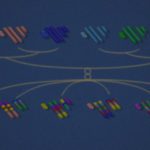Link to Pubmed [PMID] – 21762662
Gastroenterology 2011 Oct;141(4):1509-19, 1519.e1-3
BACKGROUND & AIMS: Chronic, progressive hepatobiliary disease is the most severe complication of erythropoietic protoporphyria (EPP) and can require liver transplantation, although the mechanisms that lead to liver failure are unknown. We characterized protoporphyrin-IX (PPIX)-linked hepatobiliary disease in BALB/c and C57BL/6 (Fechm1Pas) mice with mutations in ferrochelatase as models for EPP.
METHODS: Fechm1Pas and wild-type (control) mice were studied at 12-14 weeks of age. PPIX was quantified; its distribution in the liver, serum levels of lipoprotein-X, liver histology, contents of bile salt and cholesterol phospholipids, and expression of genes were compared in mice of the BALB/c and C57BL/6 backgrounds. The in vitro binding affinity of PPIX for bile components was determined.
RESULTS: Compared with mice of the C57BL/6 background, BALB/c Fechm1Pas mice had a more severe pattern of cholestasis, fibrosis with portoportal bridging, bile acid regurgitation, sclerosing cholangitis, and hepatolithiasis. In C57BL/6 Fechm1Pas mice, PPIX was sequestrated mainly in the cytosol of hepatocytes and Kupffer cells, whereas, in BALB/c Fechm1Pas mice, PPIX was localized within enlarged bile canaliculi. Livers of C57BL/6 Fechm1Pas mice were protected through a combination of lower efflux of PPIX and reduced synthesis and export of bile acid.
CONCLUSIONS: PPIX binds to bile components and disrupts the physiologic equilibrium of phospholipids, bile acids, and cholesterol in bile. This process might be involved in pathogenesis of sclerosing cholangitis from EPP; a better understanding might improve diagnosis and development of reagents to treat or prevent liver failure in patients with EPP.

